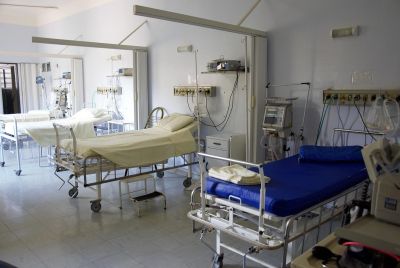Daytime saving: 'Significant risk increase' of a stroke associated with the clocks changing

Daytime saving light transitions, which lead us to change our clocks by an hour, twice a year, may increase the risk of stroke.
Researchers from the University of Turku, in Finland, have indeed shown that the rate of the most common form of stroke, ischemic stroke, is higher in the two days following a daytime saving light transition.
When the time changes by an hour, it affects our circadian rhythm. This physiological process takes place in all living things over the course of 24 hours, to regulate the timing of our periods of sleepiness and wakefulness, during the day.
In the past, studies have showed a link between stroke and disrupted sleep patterns and circadian rhythms. However, it is the first time that scientists look at the effects of a change in circadian rhythms following a daytime saving light transition.
"A daytime saving light transition is just an hour change, barely felt by most people. When you look at the risk os stroke at an individual level, you will not see much. But we were interested in assessing the risk for a large population and we found a significant risk increase" lead author Jori Ruuskanen told IBTimes UK.
Overall risk increase
To investigate the relationship between daytime saving light and stroke, the researchers looked at the medical data of hospitalised patients over a nine years period, between 2004 and 2013. They compared the stroke rate of 3,033 people who had been taken to hospital in the week following a daytime saving light transition with the stroke rate of 11,801 patients in hospital in the two weeks before or after that week.
Their findings suggest that the overall risk is higher in the week following the transition. The first two days are the worse, with the rate of ischemic stroke 8% higher than the one observed in the group hospitalised before or after the change of hour. However, no significant risk increase was observed during the rest of the week.
"This probably means that some strokes occurred earlier than they would normally have. We believe the change to the circadian rhythm triggered the stroke, so we end up seeing an important number of strokes in a short period of time. These strokes would have happened otherwise but would have been diluted in the following days" says Jori Ruuskanen.
Cancer patients and over-65s
Some patients were more vulnerable to this transition than others. For example, the risk of those who suffered from cancer increased by 25% while those aged over 65 years old saw their risk increase by 20%. No major differences was observed between genders.
Now, researchers will study whether a change in circadian rhythms following a daylight saving time transition can also increase the risk of other diseases. They think this will help them better understand why people suffer more from strokes in the two days after the transition.
"By looking at co-morbidities and at a wide range of conditions, we will get a deeper knowledge of how the body reacts to daylight saving time transitions, what causes the strokes, and solutions there are to help those most vulnerable to strokes" explains Jori Ruuskanen.
Something to watch for when the next transition occurs, on 27 March 2016.
© Copyright IBTimes 2025. All rights reserved.






















